KEBIJAKAN PENGELOLAAN BAHAYA DALAM WISATA GUA PURWOREJO DAN SEKITARNYA
Abstract
Nature tourism activities are increasingly in demand, one of which is cave tourism. Cave tourism displays exokarst and endokarst formations, cave tourism still has the potential for danger that can cause accidents/losses for visitors. Potential dangers come from physical, biological, and human activities. Risk management is needed to reduce potential losses for managers and visitors. This study aims to compile hazard management in Purworejo cave tourism and its surroundings by inventorying and analyzing potential physical, biological, and human activity hazards through a case study in Seplawan Cave, Purworejo. Research methods; field observation, inventory of potential hazards, literature studies, interviews with managers and visitors. Data were analyzed using modified UNEP 2008 and NSPA 2008 guidelines. Potential physical hazards in the exokarst area include slippery stairs and landslides, no biological hazards were found. Potential physical hazards in endokarst include slippery roads, muddy soil, flooding, low stalactites, narrow corridors, and high humidity; biological hazards in endokarst include bats and guano; the dangers of human activities in both areas are carrying excessive loads, running on stairs, entering the cave when it rains, staying overnight in the cave, not using cave equipment, and approaching the edge of the cliff. Risk management includes educating guides and visitors, adding safety ropes to the cave path, and installing warning signs in low stalactite areas, narrow passages, bat dwellings, and muddy areas.
Metrics
Downloads
References
[DINPORAPAR] Dinas Kepemudaan, Olahraga, dan Pariwisata. 2022. Statistik Pariwisata Jawa Tengah dalam Angka 2022.
[Gitapala] Teknologi Pertanian Pecinta Alam. 2014. Standar Operasional Prosedur Divisi Hutan Gunung. Yogyakarta (ID): Universitas Gadjah Mada Yogyakarta.
[ISCA] International Show Cave Association, [IUCN] International Union for the Conservation of Nature, [UIS] International Union of Speleology. 2014. Recommended International Guidelines for the Development And Management of Show Caves. [diakses pada 2 Mei 2024]. KIP Articles. https://digitalcommons.usf.edu/kip_articles/6565
[UNEP] United Nation Environment programme. 2008. Disaster Risk management for Coastal TourismDestinations Responding to Climate Change, A Practical Guide for Decision Maker. France (FR): UNEP.
Arifin HS, Munandar A, Nurhayati HSA, Kaswanto RL. 2009. Potensi Kegiatan Agrowisata di Perdesaan. Buku Seri IV: Manajemen Lanskap Perdesaan bagi Kelestarian dan Kesejahteraan Lingkungan. Kementerian Pertanian Republik Indonesia.
Ashari A. 2013. Kajian geomorfologi kompleks Gua Seplawan kawasan Karst Jonggrangan. Geomedia Majalah Ilmu dan Informasi Kegeografian 11(1): 52–64. doi: 10.21831/gm.v11i1.3568.
Febriana NPR, Kaswanto RL 2015. Tourism Track Management of Cibeureum Waterfall as a Provider of Landscape Beautification Service at Gunung Gede Pangrango National Park. Procedia Environmental Sciences 24: 174-183. https://doi.org/10.1016/j.proenv.2015.03.023
Hamzah H, Suharjito D, Istomo I. 2016. Efektivitas Kelembagaan Lokal dalam Pengelolaan Sumber Daya Hutan pada Masyarakat Nagari Simanau, Kabupaten Solok. Jurnal Risalah Kebijakan Pertanian dan Lingkungan Rumusan Kajian Strategis Bidang Pertanian dan Lingkungan 2(2): 116-128. https://journal.ipb.ac.id/index.php/jkebijakan/article/view/10979
Indonesia Speleological Society. Basis Data Kecelakaan. [diakses 1 Mei 2024]. Basis Data Kecelakaan | Masyarakat Speleologi Indonesia (caves.or.id)
Irwin MA. 2022. The Thailand Cave Rescue: General Anaesthesia in Unique Circumstances Presents Ethical Challenges for the Rescue Team. Journal Bioethonolgy International 19(2): 265–271. doi:10.1007/s11673-022-10168-w.
Maryanto S. 2013. Sedimentologi Batugamping Formasi Jonggrangan di Sepanjang Lintasan Gua Kiskendo, Girimulyo, Kulon Progo. Pustaka Survei Geologi 23(2): 105–120.
Meilani R, Muthiah J, Muntasib EKSH. 2018. Reducing the risk of potential hazard in tourist activities of Mount Bromo. IOP Conference Series Earth Environ Science 149(1). doi:10.1088/1755-1315/149/1/012021.
Muntasib EH, Ulfah MM, Samosir A, Meilani R. 2018. Potensi Bahaya bagi Keselamatan Pengunjung di Kawasan Wisata Pantai Pangandaran Kabupaten Pangandaran Jawa Barat. Jurnal Pengelolaan Sumberdaya Alam dan Lingkungan (Journal Nat Resour Environ Management) 8(1): 15–25. doi:10.29244/jpsl.8.1.15-25.
Muthiah J, Soekmadi R, Nurrochmat DR. 2015. Dampak Kegiatan Wisata Alam bagi Masyarakat dalam Kawasan Taman Nasional Komodo Provinsi Nusa Tenggara Timur. Jurnal Risalah Kebijakan Pertanian dan Lingkungan: Rumusan Kajian Strategis Bidang Pertanian dan Lingkungan 2(1): 60-69. https://journal.ipb.ac.id/index.php/jkebijakan/article/view/10393
National Speleological Society. 2014. America Caving Accident 82(5): 1-32. [diakses 1 Mei 2024]. caves.org/wp-content/uploads/Publications/aca/May_24_News.pdf
Nurysyifa F, Kaswanto RL. 2021. Kelembagaan Program Citarum Harum dalam Pengelolaan Sub DAS Cirasea, Citarum Hulu. Jurnal Risalah Kebijakan Pertanian dan Lingkungan Rumusan Kajian Strategis Bidang Pertanian dan Lingkungan 8(3): 121-135. https://doi.org/10.29244/jkebijakan.v8i3.28064
Rachmawati E. 2017. Mampukah Masyarakat Lokal menjadi Pengelola Wisata?. Jurnal Risalah Kebijakan Pertanian dan Lingkungan: Rumusan Kajian Strategis Bidang Pertanian dan Lingkungan 1(1): 30-34. Retrieved from https://journal.ipb.ac.id/index.php/jkebijakan/article/view/10276
Rahmafitria F, Kaswanto RL. 2024. The Role of Eco-attraction in the Intention to Conduct Low-Carbon Actions: A Study of Visitor Behavior in Urban Forests. International Journal of Tourism Cities 10(3): 881-904. https://doi.org/10.1108/IJTC-07-2023-0138
Rahmafitria F, Pratama AR, Kaswanto RL, Miller L. 2024. Tourism Accessibility in A Protected Area: Toward the Psycho-social Approach. IOP Conference Series: Earth and Environmental Science 1366(1): 012016. IOP Publishing. https://doi.org/10.1088/1755-1315/1366/1/012016
Ramdhan M, Priyambodo DG, Yulius Y. 2023. Rekomendasi Penggunaan Sumberdaya Air Tanah di Pulau Karimunjawa. Jurnal Risalah kebijakan pertanian dan lingkungan: Rumusan Kajian Strategis Bidang Pertanian dan Lingkungan 10(1): 11-23. https://doi.org/10.29244/jkebijakan.v10i1.45765
Sunkar A, Lakspriyanti AP, Haryono E, Brahmi M, Setiawan P, Jaya AF. 2022. Geotourism Hazards and Carrying Capacity in Geosites of Sangkulirang-Mangkalihat Karst, Indonesia. Sustainability 14(3): 1–26. doi:10.3390/su14031704.
Sunkar A. 2014. Pedoman Sistem Klasifikasi Gua Karst : Kunci Pemanfaatan Gua Karst Berkelanjutan. Jurnal Risalah Kebijakan Pertanian dan Lingkungan: Rumusan Kajian Strategi Bidang Pertanian dan Lingkungan 1(1): 1–6. doi:10.20957/jkebijakan.v1i1.10270
Copyright (c) 2024 RISALAH KEBIJAKAN PERTANIAN DAN LINGKUNGAN: Rumusan Kajian Strategis Bidang Pertanian dan Lingkungan

This work is licensed under a Creative Commons Attribution 4.0 International License.
PUBLICATION ETHICS
Jurnal Risalah Kebijakan Pembangunan Pertanian dan Lingkungan (JRKPL) is a peer-reviewed journal publishing original research to develop a coherent and respected network of landscape architecture knowledge. JRKPL committed to upholding the highest standards of publication ethics that clarifies ethical behavior of all parties involved in publishing a scientific article in JRKPL.
As publisher of JRKPL, PSP3-LPPM IPB and PERHEPI takes its duties of guardianship all stages of publishing process and we recognize our ethical and other responsibilities.
Duties of Authors
An author should not publish manuscripts describing essentially the same research in more than one journal or primary publication. Submitting the same manuscript to more than one journal is unacceptable and constitutes unethical publishing behavior. In general, an author should not submit for consideration in another journal a previously published paper.
Authorship should be limited to those who have made a significant contribution to the manuscript and should be listed as co-authors. Where there are others who have participated in certain substantive aspects of the research project, they should be acknowledged as contributors. The corresponding author should ensure that all co-authors have seen and approved the final version of the paper and have agreed to its submission for publication.
The authors should ensure that they have written entirely original works, and if the authors have used the work and/or words of others, that this has been appropriately cited or quoted. Plagiarism are include passing off another paper as the author own paper, copying or paraphrasing substantial parts of another paper (without attribution) and claiming results from research conducted by others. Plagiarism constitutes unethical publishing behavior and is unacceptable. Plagiarism detected works will be banned for further publication procedure.
The authors acknowledge that they have disclosed all and any actual or potential conflicts of interest with their work or partial benefits associated with it. All sources of financial support for the project should be disclosed. Potential conflicts of interest should be disclosed at the earliest stage possible.
Duties of the Editorial Board
Review Process
JRKPL is committed to objective and fair double-blind peer-review to prevent any actual or potential conflict of interests between the editorial and review personnel and the reviewed material. JRKPL chooses reviewers based on their expertise (whose most closely matches the topic of the paper). At least 2 reviewers are invited to evaluate a manuscript. In cases of controversy or disagreement regarding the merits of the work, an additional review will be solicited. The JRKPL editor mediates all interaction between authors and reviewers, and the review results owned by JRKPL.
Publication Decisions
The editor of a peer-reviewed JRKPL is responsible for deciding which of the articles submitted to the journal should be published. The validation of the work in question and its importance to researchers and readers must always drive such decisions. The final decision on article acceptance based on reviewer's opinions, suggestions, and comments. The editor may confer with other editors or reviewers in making this decision.
Fair Play
JRKPL evaluates manuscripts only based on the intellectual content. No race, gender, sexual orientation, religious belief, ethnic origin, citizenship, or political philosophies of the authors are considered in the evaluation process.
Confidentiality
JRKPL assure the confidentially of the manuscripts, actors, and other related information on the publishing process. Only corresponding author, reviewers, potential reviewers, other editorial advisers, and the publisher are allows for the information.
Disclosure
Unpublished materials disclosed in a submitted manuscript must not be used in an editor's own research without the express written consent of the author. Privileged information or ideas obtained through peer review must be kept confidential and not used for personal advantage.
Duties of reviewers
(1) Objectivity: Reviewer should provide written and unbiased feedback to the authors, personal criticism of the author is inappropriate. Reviewer comments should be clearly with supporting arguments indicating whether the writing is concise and relevant
(2) Expertise: Reviewer who feels unqualified to review the research reported in a manuscript or knows that its prompt review will be impossible should notify the editor and excuse himself from the review process.
(3) Acknowledgement of sources: Reviewer suggest relevant published work that has not been cited by the authors to improve the quality of the manuscript,
(4) Confidentiality: Reviewer should maintain the confidentiality of the review process. Privileged information or ideas obtained through peer review must be kept confidential and not used for personal advantage.
(5) Disclosure and conflict of interest: Unpublished materials disclosed in a submitted manuscript must not be used in a reviewer own research without the express written consent of the author. Reviewers should not consider manuscripts in which they have conflicts of interest resulting from competitive, collaborative, or other relationships or connections with any of the authors, companies, or institutions connected to the papers.























